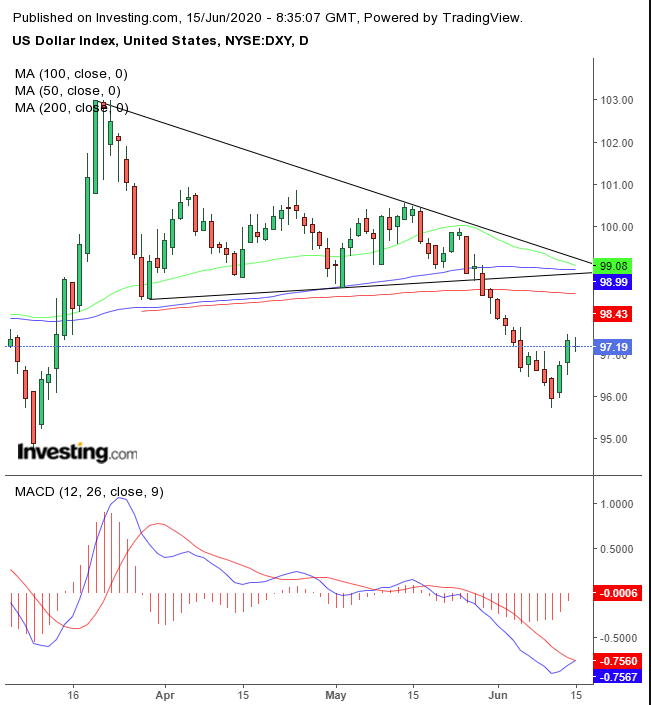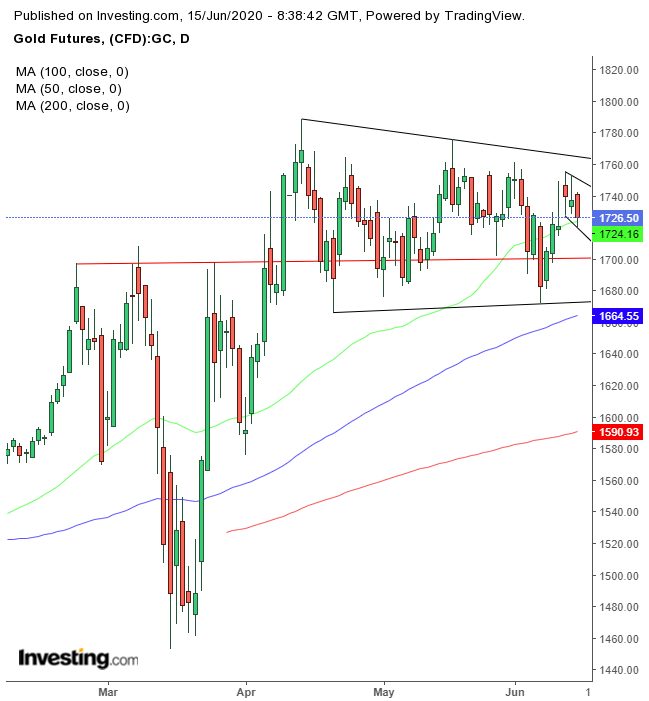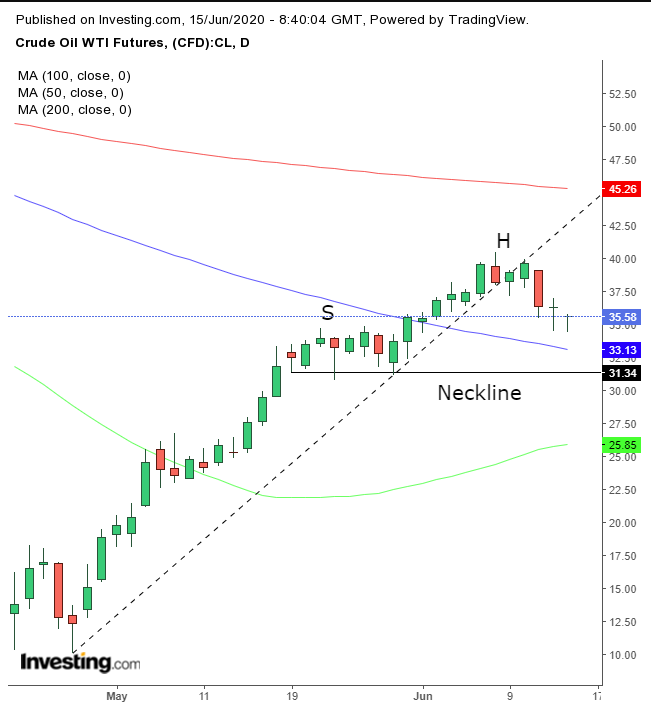- US futures signaling underlying indices could see severe selling during NY session
- WTI struggles to stay above $35
- Gold falls, along with the dollar and stocks
Key Events
As the trading week opened on Monday, US contracts for the Dow Jones, S&P 500, NASDAQ and Russell 2000, along with European shares, were all sold off, on signs of a second wave of the COVID-19 pandemic invalidating recent optimism of an immediate and sustainable economic rebound.
The dollar pulled back from a two-day advance and oil struggled to remain above $35.
Global Financial Affairs
Concerns over a second wave have been ramping up since late last week, with new, confirmed cases of coronavirus now also being reported in China, ground zero for the pandemic. As well, May Industrial Production and Retail Sales data from Beijing earlier today disappointed—demonstrating that the impact of COVID-19 continues to leave its mark on the world's second largest economy.
Futures on all four main US indices, at both ends of the spectrum—from mega to small cap—were down from the get-go some in -3% territory, though losses have reversed somewhat at time of writing. Nevertheless, US contracts remain deeply in the red.
The Stoxx Europe 600 Index was down 2.3%, extending the selloff since June 5 to 7.8%.
Asia-Pacific markets all traded lower too, with South Korea’s KOSPI seeing its deepest plunge since later March, (-4.8%). Japan's Nikkei 225 was also pressured significantly, (-3.47%).
Though US equity markets trimmed half of Thursday's losses on last week's final day of trade, they still suffered their worst decline in 12 weeks. Friday's rebound was driven by cruise company and airline shares, segments that were hardest hit during the previous day's selloff. Nevertheless, the fact that equities ended the week lower overall indicates the strength of the worries surrounding the renewed outbreak of coronavirus cases.
As such, today's market reaction is a stark reminder that investor emotions are unpredictable, which often makes linear analysis ineffective. Just because certain causes have been attributed to specific outcomes doesn't mean a similar result will occur the next time, even if spurred by the same catalyst.
The narrative now making the rounds, that the current selloff is due to Fed Chair Jerome Powell’s warning last week of a protracted recession, compounded by second wave concerns, is a perfect case in point. The Fed boss, along with a variety of economic and global health organizations, sounded the same alarms weeks and even months ago, but markets still exuberantly pushed higher. So, what changed?
Could it be that valuations are now more elevated since stocks are 15% higher than they were a month ago, after bouncing up 30% from March lows? While, that may certainly be part of the reason, we find it difficult to accept as the primary driver. After all, it's not as if we've seen a gradual slowdown of the advance.
Rather, there's been a sudden, sharp selloff. Our best guess—and it’s only just a guess right now—after much of the financial media endlessly focused on a “V-shaped recovery” investors started accepting the notion as a foregone conclusion. Of course, that's an attitude market participants should never, ever assume. Signs of the pandemic's second wave only served to drive home the point that the reality might just be different than fanciful hopes.
Yields, including for the 10-year Treasury, opened sharply lower today.

They're nearing the flattish uptrend line since April 21, with the MACD signaling that they’ll likely break through and continue lower.
The dollar retreated after heading higher over the course of the final two days of trade last week.

This has left the MACD wanting for more, as it tries to turn its journey into a bullish signal. However there's considerable resistance looming above, in the form of a completed bearish pattern and all three major MAs.
Gold has fallen for a second day—despite the dollar weakness and an equity selloff.

Technically, the price of the precious metal may be forming a falling flag, providing fresh energy to carry prices out of the range in place since April 14.
Oil has been struggling to stay above $35, as it falls for a third straight day.

WTI could potentially be developing a H&S top.
Up Ahead
- Policy decisions from the Bank of Japan, Bank of England and the Swiss National Bank are due this week.
- The CBOE plans to reopen its trading floor, which has been electronic-only since March 16.
- Federal Reserve Chairman Jerome Powell delivers his semi-annual testimony to Congress on Tuesday.
Market Moves
Stocks
Currencies
- The yen rose 0.2% to 107.22 per dollar.
- The euro was down 0.2% at $1.1236.
- The Dollar Index fell 0.2%.
Bonds
- The yield on 10-year Treasuries fell about five basis points to 0.65%.
Commodities
- West Texas Intermediate crude dropped 4.5% to $34.65 a barrel.
- Gold was down 0.5% at $1,721 an ounce.
